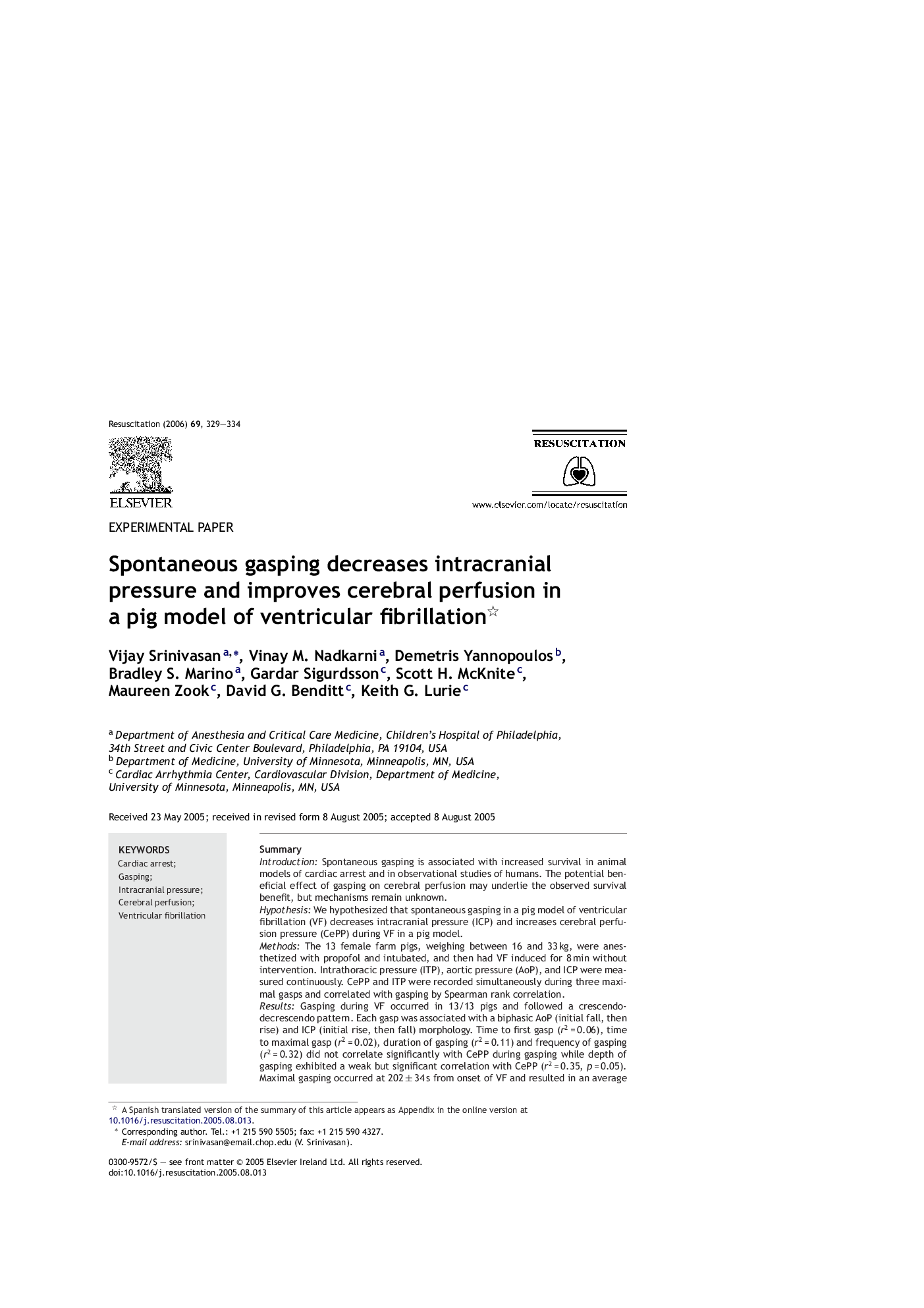| Article ID | Journal | Published Year | Pages | File Type |
|---|---|---|---|---|
| 3011345 | Resuscitation | 2006 | 6 Pages |
SummaryIntroductionSpontaneous gasping is associated with increased survival in animal models of cardiac arrest and in observational studies of humans. The potential beneficial effect of gasping on cerebral perfusion may underlie the observed survival benefit, but mechanisms remain unknown.HypothesisWe hypothesized that spontaneous gasping in a pig model of ventricular fibrillation (VF) decreases intracranial pressure (ICP) and increases cerebral perfusion pressure (CePP) during VF in a pig model.MethodsThe 13 female farm pigs, weighing between 16 and 33 kg, were anesthetized with propofol and intubated, and then had VF induced for 8 min without intervention. Intrathoracic pressure (ITP), aortic pressure (AoP), and ICP were measured continuously. CePP and ITP were recorded simultaneously during three maximal gasps and correlated with gasping by Spearman rank correlation.ResultsGasping during VF occurred in 13/13 pigs and followed a crescendo-decrescendo pattern. Each gasp was associated with a biphasic AoP (initial fall, then rise) and ICP (initial rise, then fall) morphology. Time to first gasp (r2 = 0.06), time to maximal gasp (r2 = 0.02), duration of gasping (r2 = 0.11) and frequency of gasping (r2 = 0.32) did not correlate significantly with CePP during gasping while depth of gasping exhibited a weak but significant correlation with CePP (r2 = 0.35, p = 0.05). Maximal gasping occurred at 202 ± 34 s from onset of VF and resulted in an average decrease in ICP from 27.4 ± 5.8 to 20 ± 6.7 mmHg, p < 0.01 along with an increase in CePP from −0.05 ± 10.9 to 11.5 ± 12.6 mmHg, p < 0.05.ConclusionsSpontaneous gasping during cardiac arrest decreased intra-cranial pressure and increased cerebral perfusion pressure significantly. These results may help explain why gasping is associated with improved cardiac arrest survival rates. Based upon this new understanding of the physiology of gasping, we speculate that investigation of devices that can enhance the physiological effects of gasping on intracranial pressure and cerebral perfusion should be prioritized.
